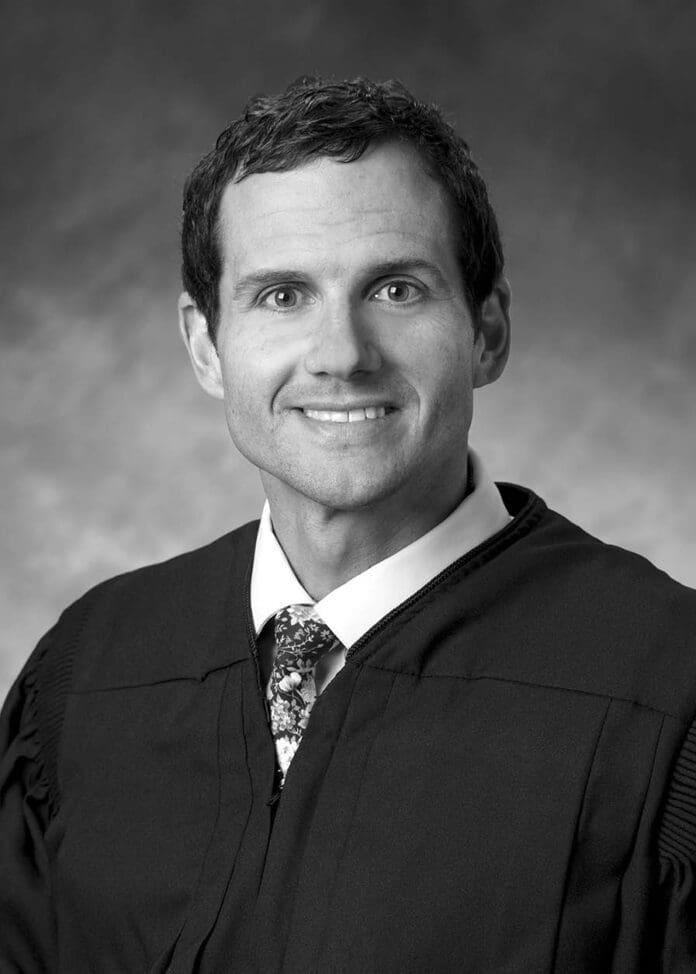By Steve Hanke
In our courtrooms, we see a heartbreaking pattern play out over and over again: Addiction, mental illness, and trauma lead people into the criminal-justice system, and our communities suffer the consequences. As a judge, I see this cycle daily.
But I’ve also seen how treatment courts can break it.
Here in Minnesota’s 6th Judicial District — serving Cook, Lake, St. Louis (Duluth, Hibbing, and Virginia), and Carlton counties — we are fortunate to have eight treatment courts: Carlton County Recovery Court, Shore Substance Use Recovery Court, North St. Louis County Hybrid Court, North St. Louis County Mental Health Court, South St. Louis County Recovery Court, South St. Louis County Veterans Treatment Court, South St. Louis County DWI Court, and South St. Louis County Mental Health Court.
The idea behind treatment courts is simple but powerful: Rather than cycling people with substance-use disorders, mental health struggles, or both through the justice system without addressing root causes, we provide them structure, support, and treatment. The comprehensive selection process for treatment-court participants is designed to identify individuals who can benefit most from the intensive, accountability-based approach while posing lower risk to public safety. Participants are closely monitored by probation and appear regularly before a judge. They engage in evidence-based treatment; are subject to dismissal, incarceration, or sanctions; and work with a team that includes prosecutors, defense attorneys, probation officers, law enforcement, social workers, peer mentors, and treatment providers.
It’s not an easy or linear path. But for many, it works.
In May, during National and Minnesota Treatment Court Month, more than 40 professionals from our 6th Judicial District joined nearly 8,000 others at the All Rise National Treatment Court Conference — the world’s largest training for treatment courts. Many also attended Minnesota’s state treatment court conference the third week of June. These conferences reinvigorate and teach us.
These conferences show that treatment courts are:
* Trauma-informed, reducing harm and inclusive: Most treatment-court participants carry deep wounds from trauma. When we acknowledge trauma, rather than treating it as a weakness, participants engage more fully in their recovery. We foster an environment where there is no shame, no blame, and no complaining — a space that is supportive, nonjudgmental, and self-empowering. Harm reduction is essential because it builds trust. It keeps participants safe, alive and engaged in the recovery process, even if they aren’t ready or able to completely stop using substances right away. We must also be inclusive. Our treatment courts must truly serve Native Americans, Blacks, People of Color, LGBTQ+ individuals, and rural residents. Everyone deserves access to hope and healing.
* Data-driven and always improving: Treatment courts succeed because they rely on evidence, not guesswork. National standards guide every decision, from early intervention and regular testing to close judicial oversight and quality treatment. But we never stop improving. We constantly collect and analyze data to track outcomes like graduation rates, reduced reoffending, and family reunification. When something isn’t working, we must adjust. Our Shore Substance Use Recovery Court, for example, is undergoing a thorough evaluation to better understand its successes, failures, and challenges. Just like our participants, we hold ourselves accountable.
* Justice and treatment working together: Treatment courts show that justice and treatment are not separate. Judges, law enforcement, probation officers, clinicians, social workers, and peer support teams coordinate care to help participants overcome barriers like housing instability, food insecurity, lack of transportation, mental and physical health challenges, and unemployment. It’s a team approach that reduces repeat offenses and creates lasting change.
* And have an impact on our communities: The research is clear: Treatment courts save lives by decreasing overdose and suicide, reduce recidivism, keep families together with fewer foster-care placements, and lower taxpayer costs by decreasing incarceration and emergency-service costs. This data holds true across the country, in Minnesota, and right here in our judicial district.
Beyond the statistics, treatment courts restore hope. I’ve seen parents reunite with their children; veterans find stability; and individuals once lost to addiction proudly graduate — sober, employed, and giving back to our community.
That’s the real power of treatment courts: They help build safer, stronger, and more hopeful communities.
Steve Hanke is a 6th Judicial District judge in the Lake County Courthouse in Two Harbors and in the Cook County Courthouse in Grand Marais. He is a former criminal prosecutor for the City of Duluth.



